Cross rib steaks and roasts require a bit of coaxing in the form of low, slow heat to relieve them of their toughness. But once they get going, the true beefy flavor of the cut takes the spotlight. Cross ribs come from the chuck, or shoulder of beef, which is one of the most flavorful portions. But like the chuck steak and chuck roast, the chuck cross rib has some tenderness issues that require serious braising therapy. A few hours of gentle braising at a low temperature melts the tough sinew and connective tissue that hides the cross rib's true tenderness and flavor.
Step 1
Pat the cross rib roast dry with paper towels and let it sit at room temperature for about one hour in a shallow dish. Tie the roast tightly at one-inch intervals crosswise and lengthwise with kitchen twine, or have the butcher tie it for you when you buy it.
Step 2
Heat the oven to 300 degrees Fahrenheit. Heat a couple tablespoons of clarified butter or vegetable oil in an oven-safe, heavy-bottomed braising pan or Dutch oven on the stove over medium-high heat.
Step 3
Season the cross-rib to taste. Place the roast in the braising pan when the fat appears to shimmer, which means it's hot enough to sear meat with.
Step 4
Sear the cross rib until medium to dark golden brown all over, or about two minutes on each side. Use tongs to turn the roast over and hold it on its sides when needed.
Step 5
Remove the cross rib from the pan after you sear it and set it aside. Lower the heat to medium and add aromatic vegetables to the pan. Classic braises use mirepoix -- two parts diced onion to one part each diced carrots and celery -- as the main aromatic ingredients. Garlic is also sometimes used.
Step 6
Sweat the aromatic vegetables until they start to get soft, stirring occasionally, about five minutes total.
Step 7
Pour a few tablespoons of cold liquid in the pan and scrape the bottom vigorously with a wooden spoon to deglaze it. Wine, stock, broth and water all effectively deglaze the pan, or loosen the bits of meat and sugars stuck to it.
Step 8
Place the cross rib in the pan and add an acidic ingredient. Classic braises use a can or two of peeled stewed tomatoes, but you can add a tablespoon of lemon juice or Worcestershire sauce to get the same effect.
Step 9
Pour enough deglazing liquid into the pan to cover the cross rib by at least half, followed by aromatic spices and herbs. The flavors and aromas of the braising liquid and herbs envelop the meat during a braise, so you can build impressive layers of flavor by adding a few fresh herb sprigs and whole spices.
Step 10
Cover the braising pan or Dutch oven with the lid and place it in the oven. If you don't have a tight-fitting lid, wrap heat-resistant plastic film over the top of the pan, then cover it tightly with aluminum foil.
Step 11
Braise the cross rib until fork-tender, or one to five hours, depending on weight. Steaks need about one hour, whereas a four- or five-pound roast needs about five hours. Check the braising liquid after three hours, and add more as needed to keep the cross-rib covered by half.
Related Articles

How to Cook Axis Deer Steaks
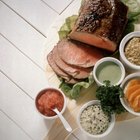
How to Cook a Flat-Cut Rump Roast
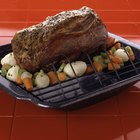
How to Cook a Really Tender Beef Roast ...
How to Cook a Lamb Square Cut Shoulder
How to Make a Bottom Roast

How to Make a Tender and Juicy Pot Roast
How to Cook a Seven Bone Pot Roast in ...
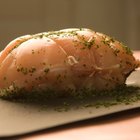
How to Braise Pork

How to Cook a Tender Top Sirloin Roast

How to Cook Boneless Country Spare Ribs
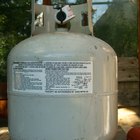
How to Barbeque a Brisket on a Gas Grill
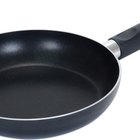
How to Cook Beef Top Round Pot Roast

How to Marinate Beef Roast to Make ...

How to Cook a Deer Neck Roast in a Slow ...

How to Slow Cook Brisket With Brown ...

How to Cook a Beef Topside Roast
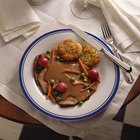
Slow Cooking an Eye of the Round Steak ...

How to Cook Bone-In Pork Strips in the ...
How to Slow Cook a Pot Roast With Beef ...
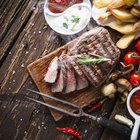
How to Cook Dominican-Style Steak
References
Tips
- Strain the aromatic vegetables out of the pan after you remove the cross rib and drain all but about one tablespoon of fat if you want to make a gravy. Add one tablespoon of roux per cup of liquid, simmer for about 20 minutes and season to taste to finish.
Writer Bio
A.J. Andrews' work has appeared in Food and Wine, Fricote and "BBC Good Food." He lives in Europe where he bakes with wild yeast, milks goats for cheese and prepares for the Court of Master Sommeliers level II exam. Andrews received formal training at Le Cordon Bleu.